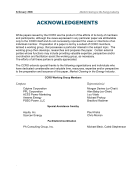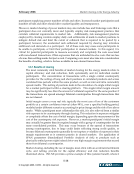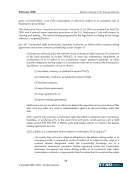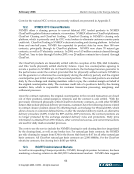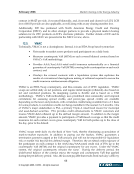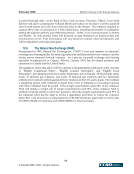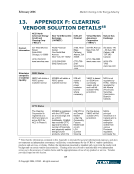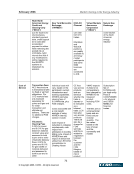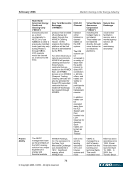February 2006 Market Clearing in the Energy Industry 3-9 © Copyright 2006, CCRO. All rights reserved. As Figure 2-1 shows, this reduction is the result of four services that comprise market clearing: payment netting, collateral netting, multilateral closeout netting, and multi-lateral netting by novation (i.e., the process by which the clearing house becomes the buyer to each seller and the seller to each buyer.) Table 2-1 illustrates how each service component of clearing reduces the credit cost-of-carry. Multilateral netting by novation contributes the greatest cost reduction, largely eliminating much of the cost of counterparty default by substituting the company’s Futures Commission Merchant (FCM), or in the case of a single tier structure, as described below, the clearinghouse, as the counterparty, and dramatically reducing collateral requirements through risk management approaches. Multilateral closeout netting (i.e., managing payments and position replacement in the event of trade default) can also achieve substantial cost reduction. TABLE 2-1: REDUCTIONS TO CREDIT COSTS Importantly, many market clearing mechanisms can improve the stability of the energy markets in times of crisis. For example, transactions cleared at a clearinghouse are not subject to claims of creditors under US bankruptcy code because FCM’s and clearinghouses enjoy special status under the bankruptcy code for forwards and futures. While FCM’s and clearinghouses do not benefit from this exemption when transacting commodity swaps (the vehicle often used for clearing power and gas transactions), the bankruptcy code similarly exempts commodity swaps regardless of the status of the party as an FCM or clearinghouse. When a party to a cleared transaction defaults, the process for resolving obligations incurred through a cleared transaction is predictable, low-cost, and determined by clearinghouse rules. The process for resolving bilaterally cleared obligations can be complex, costly and is determined by the courts. Of course, not all risk is eliminated through clearing. Market participants are subject to the credit risk of the clearing entity itself, but many of these entities have relatively strong credit quality, so the risks are considered relatively small. 3.3. Clearing in non-US energy markets Clearing services are well established in many commodity markets around the world, including energy. NordPool in Norway and the Natural Gas Exchange Inc. (NGX) in Canada illustrate many of the alternative features that clearing services in energy markets can adopt. Counterparty default Collateral/ margin posting Liquidity cost Transaction cost Total Credit cost of carry - uncleared (basis points) 84 20 5 1 110 Payment netting (4) (1) (5) Collateral netting (10) (10) Multilateral close-out netting (17) (17) Multilateral netting by novation (42) (42) Total (59) (10) (4) (0.5) (73) Credit cost of carry - cleared (basis points) 25.2 10 1 0.5 36.7 Percentage reduction -70% -50% -80% -50% -67% Basis points reduction in costs of carry credit exposure
Purchased by unknown, nofirst nolast From: CCRO Library (library.ccro.org)


